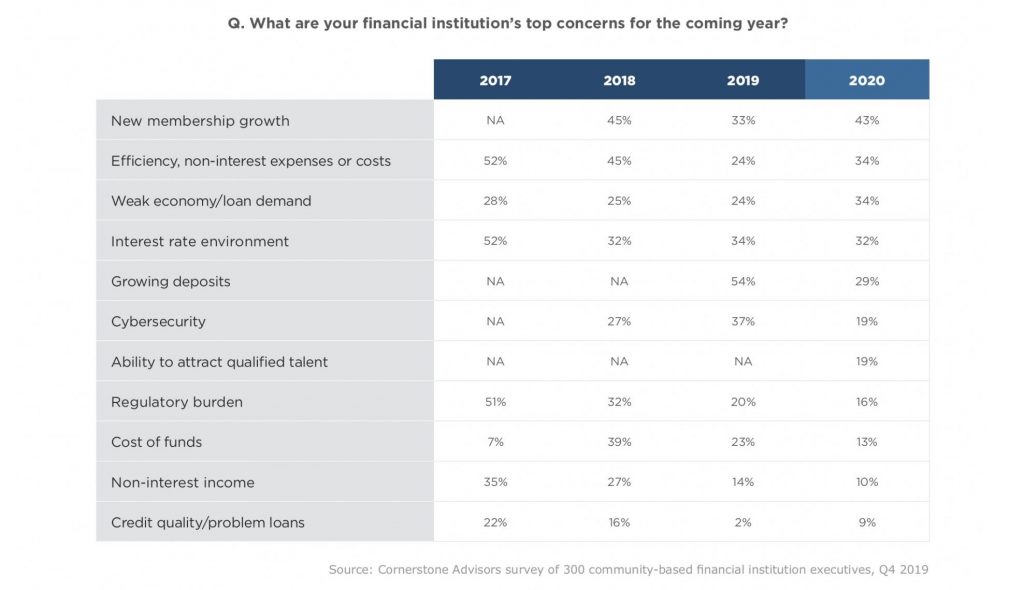I want to start out this post with this argument: if you are relying on a wide, primarily inorganic approach of “purchasing” members through acquisitions – without undergoing the serious business of skillfully deepening relationships – your broad-but-thin membership growth will not compensate for the lack of depth and loyalty that come from organically building member relationships.
In fact, you have now just succeeded in spreading out your losses on a wider field.
Let me prove my argument in two points:
Proof #1: Credit Unions Continue to Prioritize Membership Growth
In its recent report on “What’s Going on in Banking 2020,” banking consultant Cornerstone Advisors notes that 43% of credit union executives identify New Membership Growth as their top concern for 2020 – up from 33% in 2019.

While industry analysts caution that the feverish membership growth rate of the past few years is set to cool down, credit unions are still in a solid position to realize future membership gains. Membership totals continue to rise to historic levels, even as the total number of credit unions continues to shrink.
Fueling this growth frenzy over the last few years has been the credit union acquisition of banks. And, strictly from a numbers standpoint, this relatively novel strategy has met with success: membership growth at credit unions acquiring banks outpaces the rest of the industry. Since the fourth quarter of 2015, membership at credit unions purchasing banks grew 22.7%, while membership at other credit unions grew a mere 15.1%. 1
Proof #2: Overburdened Infrastructure Fuels Dissatisfaction
The risk with rapid scaling through inorganic or purchased growth is the strain that an abrupt influx of members can put on an infrastructure that is not equipped to handle it. Even though the numbers may be positive, studies like that from the recent American Customer Satisfaction Index (ACSI) suggest that mergers and acquisitions generally have a negative effect on member satisfaction: “As credit unions grow…the challenge of delivering excellent member experiences also grows.” 2 If the infrastructure cannot accommodate the sudden “shock to the system,” everyone in the credit union – from the executive to the front line to the member – is going to experience the unpleasant effects.
The alternative, organic growth, is earned over time through the deepening of relationships. It comes from truly knowing your members, understanding their needs, and providing a consistent service quality that develops into long-term loyalty. Your credit union’s growth and earnings are intrinsically linked with your members’ loyalty. Without loyalty deeply rooted in member relationships, growth and earnings cannot be sustained over time.
So, absent loyalty-based member relationships, having more members simply means, as I said, that you will be spreading out your losses over a wider field. When you compromise your existing member relationships, or don’t develop the skills for building and deepening relationships with the members you already have, your connections with your newly acquired members will be…fragile, at best.
You can do this – grow your memberships both deeply AND widely. But if your focus is mostly on width and lacking in depth, the future will not turn out as you are hoping and planning.
Secure member loyalty through every channel, from frontline execution to seamless, frictionless digital experiences. As for the “how,” you don’t have to go it alone. Seek the experts who know how to get you where you need to be…predictably and confidently…and start by sending us a message here.






















